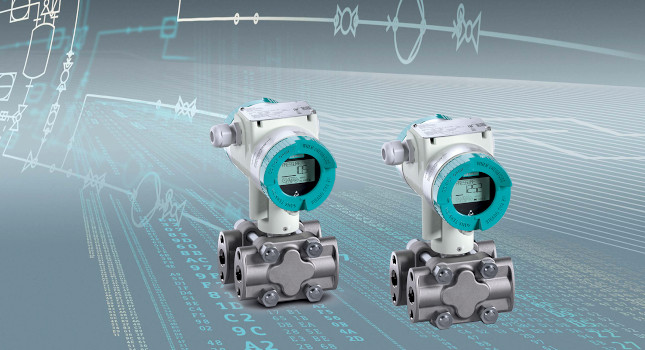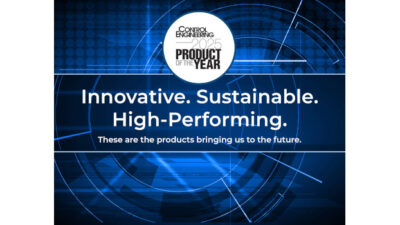Advances in process instrumentation extend beyond sensor accuracy. Computing, algorithms and networking capabilities add functionality.

Learning Objectives
- Product innovations process instrumentation more effective.
- Greater software and wireless capabilities add functionalities.
Advances in process instrumentation extend beyond sensor accuracy. Computing, algorithms and networking capabilities have added functionality. For new and existing process instrumentation, learn these tips and tricks.
Level instrumentation
Trends in process level instrumentation include the following:
Proportional Level Detector and Control Unit from Automation Products Inc.’s Dynatrol Division is designed to control liquid levels in pilot plants, processing, small vessels, or anywhere it is necessary to obtain proportional level control over a precise range. The small vessel proportional level detector CL-10GP works with varying power frequency and can activate electro-pneumatic transducers, valve positioners, indicators, controllers or other DC current devices. It can accurately monitor and control a precise liquid level range due to its high-resolution, proportional output signal. It can operate under varying frequency power supplies or harsh process conditions, such as high pressures and high temperatures and operate on either a 50 or 60 Hz power supply.
Wireless Bluetooth: Liquiphant FTL51B and FTL41 Point Level Instruments from Endress+Hauser has Industry 4.0 and IIoT capabilities such as access via wireless Bluetooth technology, automatic proof tests and verification, and easy commissioning via a mobile device. In addition, operational clarity is provided by a high-visibility LED.
Wireless level transmitters for low-signal applications: Sitrans LR100 series are 80 GHz compact radar transmitters with Bluetooth wireless technology from Siemens Industry Inc. They have a narrow beam for flexible installations in existing vessel openings – or non-intrusively through plastic vessels and plenty of margin to accommodate signal killers such as condensation, turbulence, buildup, or light fluffy solids. The custom microchip technology delivers extremely high sensitivity so that even the weakest of signals is detected.
Pressure instrumentation
Trends in pressure instrumentation include the following.
Make changes to instruments without a factory visit: Gas Select 6.0 Firmware for Mass Flow Meters and Controllers from Alicat Scientific improves user control and data speed, includes a library of up to 130 preloaded gases, referenced to NIST REFPROP 9 and drives the flexible user interface for controlling instrument operation. Version 6.0 has user-selectable engineering units that can be changed in the field such as units of pressure, temperature, volume, standard volume or mass. Flow instruments can be realigned to correlate with other calculations in the process stream, or even repurposed for new applications. Setpoint input is now accepted either at the local panel or through the serial port, without first switching the input source. Both sources are active full time. The local panel is also easier to read, with the primary parameter that is displayed center screen now clearly labeled.
Very fast response time, M12 quick disconnect: SPTD25 Series Pressure Transmitters from AutomationDirect has an all-stainless steel thin film sensing element and is engineered to meet many industrial, commercial, and original equipment manufacturer (OEM) pressure measurement applications. The sensing element provides very fast response time and can be used to sense any compatible media. With a robust design resistant to vibration, shock, and EMI/RFI, it provides high accuracy over a wide compensated temperature range.
Remote safety handling saves commissioning time: Sitrans P320/P420 Pressure Transmitter from Siemens has user-friendly features include an advanced display, showing the device’s measurements and status. It has a large LCD with clear text and icons, four-button menu navigation and a quick-start wizard. The instruments’ remote safety handling via software saves time during SIL commissioning: rather than manually configuring each individual device across a facility, operators can program transmitters from the control room. Both transmitters also have increased proof test intervals, significantly lowering maintenance costs by allowing for testing periods of up to 15 years rather than every two. The reduced response time of the devices optimizes the process efficiency by speeding up the control system’s response to changing application environments. The high performance P420 is digitalization-ready, with built-in trend logging (up to 1500 points), limit monitoring and event counters.
Temperature instrumentation
Trends in temperature instrumentation include the following:
Enhanced alarm functionality in software, wireless temperature and humidity monitoring of electrical enclosures: Delta T Alert from Iriss is a wireless, self-contained temperature-monitoring system with sensors that attach to electrical enclosures. The units monitor the delta between the internal and external enclosure temperatures. The data is wirelessly transmitted for analysis, trending and also can remotely alarm support teams with the details and location of the temperature alarm.
Enhancements include remote sensor firmware update capability (hardware and software), improved alarm functionality in software, added humidity monitoring (was just temperature before), and improved report generation capability in software, better battery management and implemented signal and added mesh networking capability.
Double the monitoring: TMZ Modbus Temperature Transmitter and Signal Converter with Dual Universal Input from Moore Industries accepts two inputs that can be configured for current and voltage, or for RTD, thermocouple, mV, potentiometer and resistance, doubling monitoring capability in one unit. The TMZ converts the inputs to the standard MODBUS RTU communication protocol ready for direct interface with MODBUS-based monitoring and control systems.
Advanced PID temperature control: Temperature Control Panel – Single phase, 120 Vac, 15 A, 1,800 W from Shift Controls feature advanced proportional-integral-derivative (PID) temperature control with industry leading safety, construction quality, and control system integration. Power is controlled by a zero-cross SSR for precise temperature control. All enclosures include a disconnecting fuse holder, front mount SAFE/RUN control switch, and a safety contactor to positively disconnect the heater from power when in the SAFE switch position, an over-temperature alarm state, or a thermocouple fault condition. Seamlessly integrate the control system with a 4-20mA temperature retransmit, user programmable alarm contacts, RS-485 modbus, and optional external interlock. The NEMA 4X corrosion resistant enclosure is ideal for your most demanding industrial and laboratory environments. The temperature control panel power connections can be configured from the factory with line and load screw terminals, 5-foot cords and NEMA 5-15 plug and receptacle, or 12-foot cords with an integrated GFI NEMA 5-15 plug and receptacle. The integrated GFI plug should be used where the heater may be exposed to moisture or water.
Flow instrumentation (flowmeters)
Trends in flow instrumentation include the following:
Install under pressure: New Hot Tap Digital Flowmeter from Exair eliminates the need to isolate and remove pressure from the pipe it is being installed upon. It incorporates two valves that the probes pass through and a muffler that collects chips from the drilling process. The digital display shows the exact amount of compressed air being used, making it easy to identify costly leaks or inefficient air products. No cutting, welding, adjustments or calibration are ever required. Available on 2-. to 8-in. flowmeters.
Adaptive sensor technology: FCI ST80 Series Thermal Mass Flow Meter from Fluid Components International has an innovative hybrid sensor drive. This measuring technique combines constant power (CP) and constant temperature (CT) thermal dispersion sensing technologies in one instrument. Complementing this new measurement drive technique are a choice of four flow sensor element designs to further ensure best installed performance, including FCI’s new wet gas solution.
Slurries, pastes, pulp stock and non-uniform solids: Foxboro MagPlus from Schneider Electric. Magnetic flowmeters are designed to fit a wide range of applications and industries, including water, slurries, chemicals, pharmaceuticals and foodstuffs. The meters are a reliable flow measurement with field-proven stability to maximize the availability of flow measurement. The IMT25 is a magnetic flow transmitter with a pulse dc technique for standard application in the water and wastewater industry and other process industries. The IMT96 magnetic flow transmitter uses the eX-Pulse coil excitation method for the most difficult applications such as slurries, pastes, pulp stock and non-uniform solids. The MAG2 series flowmeters are based on field proven two-wire, loop powered technology.
Clamp-on sensors: Siemens external Digital Sensor Link (DSL) for Sitrans FST030 ultrasonic flow system from Siemens Industry Inc. consists of a transmitter, an internal or external FS-DSL Digital Sensor Link (DSL), and one or more pairs of FSS200 clamp-on sensors. The sensors are clamped onto the pipe for each measurement. The DSL is an electronic module that generates analog signals, which are evaluated by the sensors and recorded as measured values.
Mark T. Hoske is content manager, Control Engineering, CFE Media and Technology, [email protected].
MORE ANSWERS
CONSIDER THIS
What opportunities are you overlooking because you’ve specified the same instrumentation again?
ONLINE
If reading from the digital edition, click on the headline for more resources.




